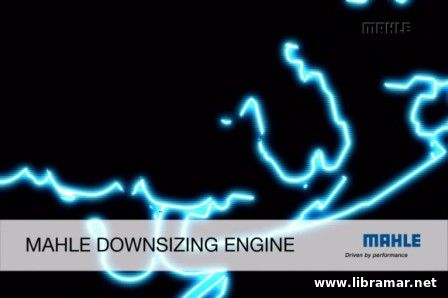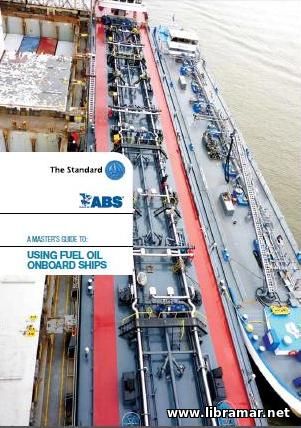Offshore Supply - Preparing and Operating Inside the 500 metre Zone
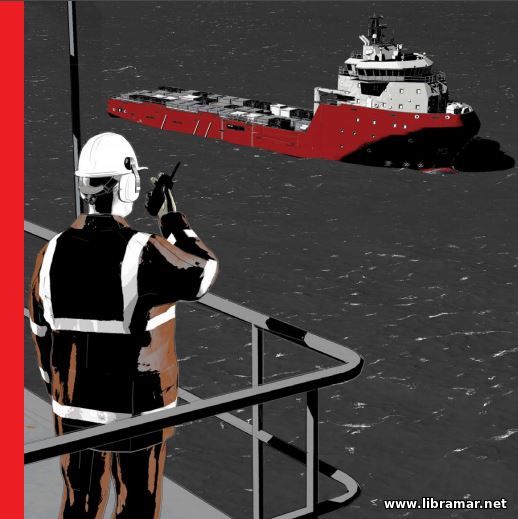
Let us talk a bit about the preparations that shall be done by the crew of the supply vessel about to enter the 5000 meter zone of the offshore installation. Before leaving port, the vessel shall ensure that it has most recent field charts and up-to-date information about the installations it is going to. On the way to the field, the vessel must monitor the weather and the weather forecasts. The people on the installation will be doing the same but the final decision for going ahead with any operation will be made by the Master.
Whenever at an hour of way or consistent with field procedures, the vessel notifies the installation of the vessel’s ETA, or estimated time of arrival. After the vessel is instructed to proceed, the pre-entry 500 meter zone checklist must be gone through.
Every vessel will have one as a part of the safety management system. Sometimes the charterers will have one that they will need the vessel to use. Whether the company or charterer checklist, it will include a communication check and a full equipment check including engines, thrusters, and rudders.
All propulsion machinery should be started; steering gear system and changes between control positions and maneuvering modes need to be checked. Some fields require the vessel to be on DP, while others insist that it is not used. The vessel needs to get it right. If required, the DP checklist must be completed and the DP must be running on entry to the zone.
Once all checklists are completed, the vessel can request permission to enter the 500 meter zone. Only when permission is given, can the vessel proceed. Before entering the zone, there must be a toolbox talk. Although time may be limited, it is important that the deck crew members understand the planned operations as well as the hazards on the vessel; there are many external hazards that must be considered.
The most recent field charts will be needed. Check with the OIM or the designated person to ensur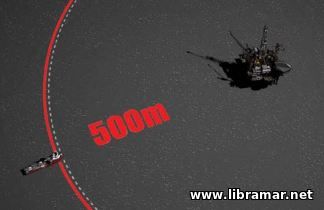 e that you have the most recent information. If subsea operations are taking place, it is unlikely that the vessel be allowed inside the 500 meter zone. But this can happen if the installation needs the supplies urgently.
e that you have the most recent information. If subsea operations are taking place, it is unlikely that the vessel be allowed inside the 500 meter zone. But this can happen if the installation needs the supplies urgently.
Helicopter operations are another potential hazard. Helicopters almost always land and take off into the wind and the vessel is usually asked to stand off. The vessel will be informed of any helicopter operations.
Other operations that can conflict with the vessel’s activities include overboard discharges, flaring, well testing, seismic work and air venting. The Master must ensure that the installation’s designated person keeps the vessel fully informed about all these operations, both planned and unplanned.
The vessel should first maneuver to a safe position outside the radius of the installation’s cranes and at least fifty meters off the installation. The Master should then assess the situation to ensure that working conditions are safe before proceeding to the position for cargo operations. Inside the zone, the engine room as well as the bridge should be continually manned. It is best practice to work down weather from the installation. If the installation requires vessel to work up weather, a further risk assessment may be needed.
It is possible that the vessel may need to tie up to the installation. This is a challenging procedure. The vessel will be moored either stern-to or alongside. Regular checking of the mooring lines is essential. These situations can cause considerable wear on the mooring ropes.
The personnel on the bridge must maintain a constant listening watch on the field VHF channel. The vessel must be ready to change position or stop operations at short notice. Stopping operations may mean leaving the 500 meter zone. Working inside the 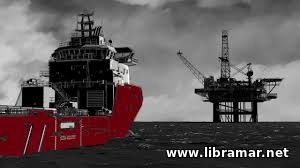 500 meter zone is demanding for everyone on board.
500 meter zone is demanding for everyone on board.
Many operations may be going on at the same time so it is important that anyone is told about any changes to the plan. The deck crew needs to keep alert – they must be prepared to stop or alter what they are doing at short notice, either because the weather has deteriorated or because the installation requires it for any reason.
Proper planning, good communications, and putting the safety of everyone on board as main priority will help to make these operations safe and successful.
The "Read Later" function allows you to add material to this block with just one click. Just click on the icon and read the articles that interest you at any convenient time.
